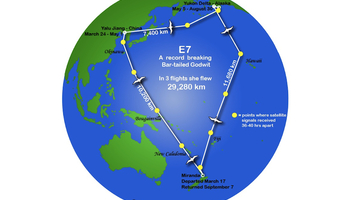Jesse Conklin explains an exciting research finding that came from using geolocators – the time birds leave for migration from New Zealand is directly linked to breeding grounds in Alaska. Birds breeding in northern regions leave New Zealand later – giving time for the area to thaw so that it is suitable for breeding. Jesse’s research is part of his work as a PhD student at Massey University.
Transcript
Jesse Conklin
The most exciting finding that came directly from the geolocators was a link between the timing of migration from New Zealand and a location of a nest in Alaska. This is just amazing.
Basically, godwits depart New Zealand on migration all through March and into early April, so there is about a 4½ week period that birds are leaving here. And each bird leaves at a certain time of month each year. They know exactly when they want to leave, and they leave within a few days of it every year.
And the geolocators told me that all the birds that leave early in the month in March are breeding in the southern part of Alaska breeding range, and all the ones leaving at the end of March are breeding in the very northern part of Alaska, and this makes sense when you think about it because Alaska is frozen over for 6 to 7 months out of the year, depending on where you are, and it thaws out in time for this amazing breeding season where thousands or millions of birds come from all over the place to breed in Alaska – this extremely productive short summer.
And so at each latitude throughout Alaska, summer starts at a different time, because it’s thawing out. So the southern sites thaw out first and birds can start breeding earlier, and later the northern parts of Alaska thaw out and birds can start breeding up there. So although we don’t have data directly on the subject, we believe that a godwit will always breed in the same area, and so it makes sense that the bird would leave at the same time because it’s got a deadline in Alaska.
It’s about the same every year, and the ones in the north are about 3 weeks later than the ones in the south. So this pattern of birds leaving all the way across the month of March is directly tied to where they plan to breed in Alaska, and the geolocators told us that.
Acknowledgements:
Scientific figures reprinted by permission from Macmillan Publishers Ltd: NATURE COMMUNICATIONS (Conklin, J.R. et al. Breeding latitude drives individual schedules in a trans-hemispheric migrant bird), Copyright (2010)


